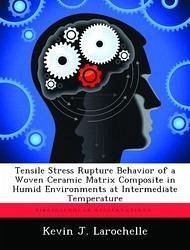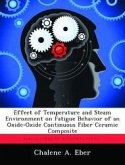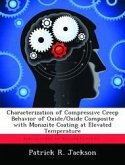Stress rupture tests on the SylramicTM fiber with an in-situ layer of boron nitride, boron nitride interphase, and SiC matrix ceramic matrix composite were performed at 550oC and 750oC with 0.0, 0.2, or 0.6 atm partial pressure of water vapor, pH2O. The 550oC, 100-hr strengths were 75%, 65% and 51% of the monotonic room temperature tensile strength, respectively. At 750oC, the strengths were 67%, 51%, and 49%, respectively. Field Emission Scanning Electron Microscopy analysis estimated the total embrittlement times for 550oC with 0.0, 0.2, and 0.6 atm pH2O were gt; 63 hrs, gt; 38 hrs, and between 8 and 71 hrs, respectively. Corresponding estimated embrittlement times for the 750oC were gt; 83 hrs, between 13 and 71 hrs, and between 1 and 6 hrs. A time-dependent, phenomenological, Monte Carlo-type failure model was developed and simulated total embrittlement times that were within the experimentally determined range for all cases. Variation in the room temperature ultimate strength, the elevated temperature ultimate strength, and the fiber reference strength affected the model the most. Variation in the modulus of elasticity of the matrix and fiber affected it the least. Stress rupture strength degradation increases with temperature, moisture content level, and exposure time.
Hinweis: Dieser Artikel kann nur an eine deutsche Lieferadresse ausgeliefert werden.
Hinweis: Dieser Artikel kann nur an eine deutsche Lieferadresse ausgeliefert werden.








